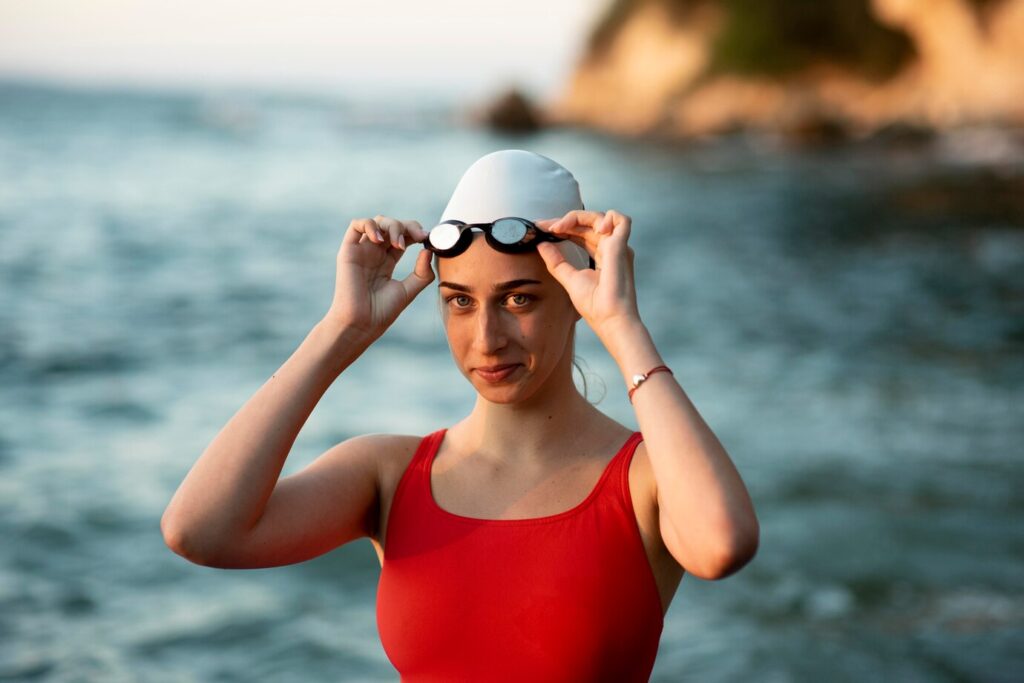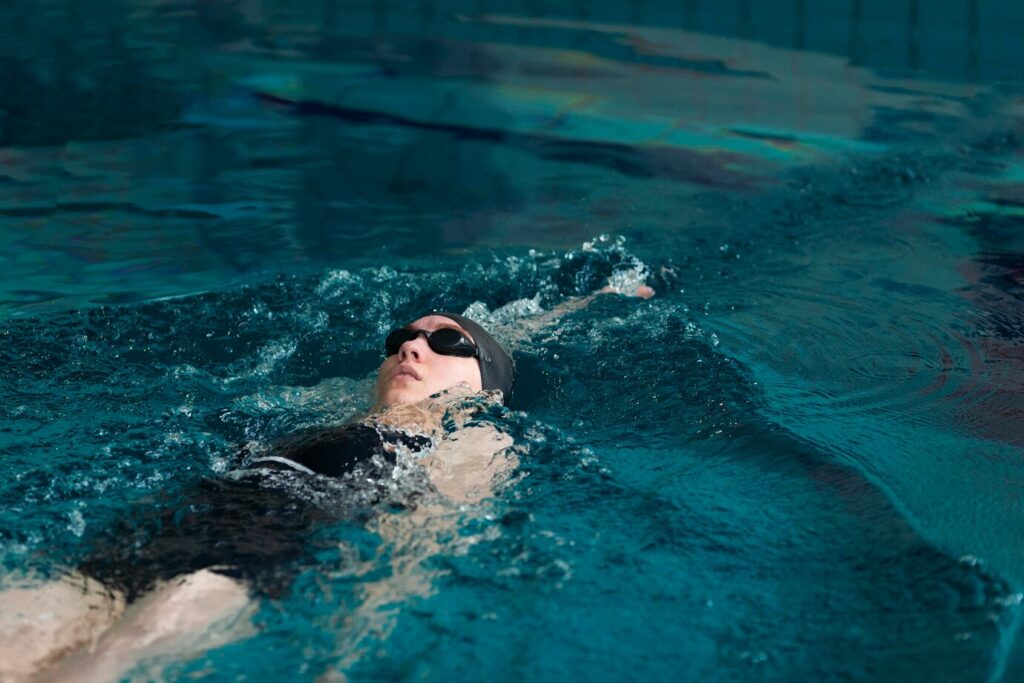Swimming is for exercise, leisure, or recreational purposes, but the challenge is especially true if it’s done for the first time.
But do not worry. Here, you will get a guide who will help you swim. A positive attitude will also help you become a good swimmer. Below are ten beginner swimming tips lessons to help you get the best when learning to swim.
1. Start with the Basics
The first lesson any swimmer must take is learning the waters that he or she will be swimming in. If you are starting, spend a little time in the shallow end to get used to the water. Start with shallow breathing exercises such as holding your breath, placing your face in water, and blowing bubbles.
The following activities will increase your confidence and contribute to relieving discomfort during swimming.
Don’t rush. This will take some time, so you should practice swimming in the water.
2. Invest in Proper Gear

They nearly made me not go again because I lacked the appropriate gear. Buy a good-fitting swimsuit, cap, and goggles if you are insecure about your hair. The mask will shield your eyes and enable you to see underwater, which is very important to a first-timer.
3. Learn to Float
Floating is among the easiest water tricks, so any learner must learn it. The first exercise recommended is the back float. One of these is to lie on your back, keep your limbs and body as far apart as possible, and allow the water to do the trick. If you can get used to lying on your back while floating, try floating on your stomach.
Pro Tip: This position requires you to stay upright and keep your spine in the natural floating position.
4. Practice Breathing Techniques

Breathing is a part of swimming; if done wrong, you will soon feel exhausted. Before you turn your face into the water, try to take air from your mouth and release it through the nose or the mouth. Breathing rhythm is crucial if you are to swim longer while increasing your efficiency.
5. Start with Simple Strokes
Start with elementary movement, such as freestyle or the front crawl swim technique. The key here is going slow, watching positions, and being specific about how you move. Do not rush during strokes; make sure they are slow and smooth. The four basic swim strokes are the four basic strokes, but as you grow in confidence, you may shift to other strokes, such as the breaststroke or the backstroke.
6. Take Swimming Lessons

Swimming lessons are a good way to learn how to swim; otherwise, you can miss a good chance. A certified instructor will show you how to do this and give you an individual approach. Group lessons are also flexible because you are grouped with people with the same skill level as you.
7. Practice Kicking Techniques
Eliminate all flexion in your legs and try to swing from the hips rather than the knee.
Pro Tip: Do not splash water whilst kicking; this would mean that slow and smooth kicks have a small span.
8. Do not hesitate to employ support. To be precise, do not fear support at all.
A new swimmer can use floatation accessories such as a kickboard, pool noodle, or swim vest. Such tools assist you with the anticipation of situations in which you wish to enhance your particular competence, as well as feel more confident. Afterwards, you’ll depend on them minimally as your skills develop.
9. Stay Relaxed and Patient

One of the significant issues that anybody will find hard to overcome, especially when starting, is the ability to control their emotions or rather anxiety when in water. This is because tension or nervousness slows down one’s operation or movement when swimming. It is essential to work the muscles, so ensure you take deep breaths, take breaks, and enjoy your practice sessions. Swimming is a learning process, so don’t get frustrated with yourself if you cannot do it properly during the first round.
10. Practice Regularly
Great emphasis should be placed on regular practice when it comes to swimming. Ideally, it should be at least two to three times a week if the exigency does not arise. Thanks to practice, the muscles already know what is expected of them; you will also have increased endurance and confidence.
Bonus Swimming Tips:
Stay Hydrated:
Even though you’re in the water, swimming is as likely to make you lose water as walking on the street. Therefore, you need to practice hydrating yourself before and after swimming.
Warm-Up and Cool Down:
Warm-up exercises before and after swimming can help avoid sore and tight muscles.
Set Realistic Goals:
Learning to swim takes time. Central on incremental change rather than seeking perfection.
Final Thoughts
Swimming is a fun and joyful activity that benefits the human body and mind. With these tips, you will be on the right track to a good swimming experience as a novice. Remember that even swimming pool champions were once beginners, so you do not need to stress yourself. Jump in, keep on swimming, and have fun.
Explore more fascinating blogs at Trends of World

